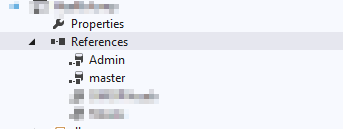I hear from many people (my wife included) that they “just
don’t have a mind for programming”. Now maybe that’s just a polite excuse to
say they have no interest in programming, which, too, is fine. And while, like
with music, there are some people who really have (or do not have) structures
in their brains making it difficult if not impossible to do, I think the
majority of the skills are generic enough to be learned with practice and more
importantly, a drive to do so.
One of the skills you pick up along the way is what, by
analogy, I’d like to think of as rolling an object around in your hand. There
are few things in our daily lives that we’ve never seen before, let alone something
you can hold in your hand. But there are some. Imagine an unsolved
Mirror
Cube. Or maybe you’ve decided you want to work on your car, and you start
removing parts you never knew existed. Or maybe you get a Christmas present
still in the packaging and you’re trying to figure out what it might be?
Many times, you’ll just start fiddling with it. Feeling its
surface. Rolling it around in your hand. Feeling its weight. Inspecting it from
different angles; color, shape, function. If it has parts, how they fit
together. Maybe the parts move. Maybe they move and they shouldn’t. Maybe, and
most cripplingly, you’re afraid to do the above because you think you might
break it, or not be able to put it back the way it was. Maybe you’re right.
The point is, you’re solving a problem. You don’t realize it
yet, but you are. Any time you’re presented with something you don’t fully
understand you start doing an investigation. The only difference in the
software world is you’re lucky enough to be able to hit the undo button,
removing much of the risk in the last bit of the previous paragraph.
To a large extent, that’s what software development is. Or
more accurately, that’s what software maintenance and troubleshooting is… which
is basically what software development is. Maybe that’s what people talk about
when they say they don’t “have a mind for programming”. It’s not that they can’t,
but they’re not the kind of person who feels the need or desire to question
everything, get their hands dirty, and learn about as abstract a concept as an arbitrary
piece of code. Personally, I find it a lot of fun. And you sort of do this “rolling
around” in levels, going from the simplest to the hardest.
At the simplest, you’re just trying to acknowledge what it
is you’re looking at. If it’s a Rubik’s Cube, that’s what you’re trying to come
up with. If it’s an encoding issue on a web page, that’s all you’re trying to
identify. Then you start fiddling with it. With our Rubik’s Cube example, start
twisting things. Start small; make sure you can find your way back. If it’s a
piece of text that’s wrong, maybe find where that text comes from, or how it’s
being displayed.
All along the way, you’re looking for clues to figure out
what you ultimately are trying to get to. If it’s a Cube, maybe you’re trying
to solve it. If it’s a bug, maybe you’re trying to find the root cause and
possibly fix it.
For your cube, maybe you start trying to solve a side. You
draw upon your knowledge of geometry, group theory (or at least the intuitions
you have about it), your memory of fiddling with sides and your goal to try to
move all the pieces to one side. For your software bug, maybe you open the code
that generates that text, and you start substituting other pieces of text
seeing if they yield the same bug.
This process can go as deep as it needs to. For the Rubik’s
Cube, entire branches of mathematics are in no small part devoted to solving
puzzles like the Rubik’s Cube. For software, there are web tools, open source
tools, tools by Microsoft or Apache to solve these tools. There are test
frameworks and troubleshooting methodologies. All of which will come with
practice and experience. Many of which you won’t need for all problems, but are
tools none the less at your disposal.
The point is, when you see an intractable problem in front
of you, don’t be scared. Pick it up and start playing with it.

Comments
Post a Comment